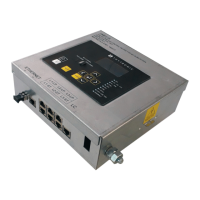42
42
SME2-IS - Manual - 06 - 2021
FUNCTIONAL CHARACTERISTICS
— Second harmonic restraint - 2ndh-REST
Use
In order to prevent slow tripping of certain overcurrent protections due to the inrush current, the
second harmonic restraint function can be enabled on thresholds 51.S2 and 51.S3 of the 50/51 pro-
tection.
Foreword
When a power transformer is powered up, the phenomenon of inrush current occurs, teh amount
and duration of which depends on a variety of factors, including:
• Instantaneous value of the power voltage.
• Structural characteristics of the transformer, magnetisation characteristic and dimensions.
• Residual ux.
The maximum value of the inrush current is obtained when the transformer is powered with voltage
applied when the sine wave passes through zero, in the positive or negative direction, with positive
or negative residual ux respectively.
Furthermore, the ratio between the maximum inrush current and the nominal transformer current
diminishes with the size of the transformer itself.
In any case, the inrush current contains a signicant second harmonic component.
Operating logic
The second harmonic component of each phase current (I
L1-2nd
, I
L2-2nd
, I
L3-2nd
) is compared with an
adjustable threshold I
2ndh
(default 25%).
When at least one of the three second harmonic components violate the threshold, the threshold
itself starts.
To maintain the block on the various protection functions until they are reset, the second harmonic
restraint function has an adjustable reset time t
2ndh>RES
(default 0.45 s); in any case, if the after the
reset time has timed out the starts of thresholds 51.S2 and/or 51.S3 remain active, the second har-
monic restraint block is disabled to enable it to trip.
The function can be enabled or disabled (default).
Functional diagram of the second harmonic restraint (2NDH/REST)

